
CORRESPONDENCE MANUAL
COMDTINST 5216.4E
February 2024
THIS PAGE INTENTIONALLY LEFT BLANK

Commandant
US Coast Guard Stop 7710
United States Coast Guard
2703 Martin Luther King JR Ave SE
Washington, DC 20593-7710
Staff Symbol: CG-612
Phone: (202) 372-2673
COMDTINST 5216.4E
01 FEB 2024
COMMANDANT INSTRUCTION 5216.4E
Subj: CORRESPONDENCE MANUAL
Ref:
(a) The Plain Writing Act of 2010, Pub.L. 111-274, 124 Stat. 2861
(b) Rehabilitation Act of 1973, Pub. L. 93-112, § 508
(c) Wire or Radio Communication, 47 U.S.C. Chapter 5
(d) Federal Records Act of 1950 (as amended), Pub.L. 81-754, 64 Stat. 578, codified as
44 U.S.C. § 2101 et seq
1. PURPOSE. This Instruction provides Coast Guard policy for electronic and paper
correspondence, writing standards, and other correspondence related topics. This Instruction
contains guidance on how to access the latest templates, forms, plain language resources, and
writing style guides.
2. ACTION. All Coast Guard unit commanders, commanding officers, officers-in-charge,
deputy/assistant commandants, and chiefs of headquarters staff elements must comply with
the provisions of this Instruction.
3. AUTHORIZED RELEASE. Internet release is authorized.
4. DIRECTIVES AFFECTED. The Coast Guard Correspondence Manual, COMDTINST
M5216.4D is hereby canceled.
5. DISCLAIMER. This guidance is not a substitute for applicable legal requirements, nor is it
itself a rule. It is intended to provide administrative guidance for Coast Guard personnel and
is not intended to nor does it impose legally-binding requirements on any party outside the
CoastGuard.
6. MAJOR CHANGES. Clarifications include detail on expanded paragraph and subparagraph
format, use of rank/grade in memoranda, increased emphasis on a tone of respect in email
correspondence, and general refresh reflecting the Coast Guard writer in the current DoD365
environment including a new location for templates in the Directives Library under Other
Publications.
1

COMDTINST 5216.4E
7. SCOPE AND AUTHORITIES. It is recommended the reader become familiar with the
directives and publications that are noted throughout this Instruction and are listed in
numerical series order:
Administrative Remarks, Form CG-3307, COMDTINST 1000.14 (series);
Coast Guard Military Medals and Awards Manual, COMDTINST M1650.25 (series);
Coast Guard Civilian Awards Manual, COMDTINST M12451.1 (series);
Mail Management Postal Program Policy, COMDTINST 5110.1 (series);
Forms Management Program, COMDTINST 5213.9 (series);
Directives System Program; Commandant Instruction (CI), ALCOAST and Other
Publications, COMDTINST 5215.6 (series);
Memoranda of Understanding/Agreement, COMDTINST 5216.18 (series);
Change Management, COMDTINST 5224.5 (series);
Accessible Systems and Technology Program (ASTP); Section 508, 5230.60 (series);
The Coast Guard Freedom of Information and Privacy Acts Manual, COMDTINST M5260.3
(series);
Organization Management, COMDTINST 5400.7 (series);
Cybersecurity Governance, COMDTINST 5500.13 (series) (FOUO);
Publishing of Printed and Bound Materials for the Coast Guard, COMDTINST 5604.1
(series);
Printing of Executive Stationery for Routine Use, Official Ceremonies, and Special Events,
COMDTINST 5603.1 (series);
8. ENVIRONMENTAL ASPECT AND IMPACT CONSIDERATIONS. The Office of
Environmental Management, Commandant (CG-47) reviewed this Commandant Instruction
and the general policies contained within, and determined that this policy falls under the
Department of Homeland Security (DHS) categorical exclusion A3. This Commandant
Instruction will not result in any substantial change to existing environmental conditions or
violation of any applicable federal, state, or local laws relating to the protection of the
environment. It is the responsibility of the action proponent to evaluate all future specific
actions resulting from this policy for compliance with the National Environmental Policy Act
(NEPA), other applicable environmental requirements, and the U.S. Coast Guard
Environmental Planning Policy, COMDTINST 5090.1 (series).
9. DISTRIBUTION. Electronic distribution in the Directives System Library. Intranet/Pixel
Dashboard: Directives Pubs, and Forms - PowerApps (appsplatform.us) . If Internet released:
Commandant Instructions (uscg.mil), Coast Guard Forms (uscg.mil) .
10. RECORDS MANAGEMENT CONSIDERATIONS. Records created as a result of this
Instruction, regardless of format or media, must be managed in accordance with Records &
Information Management Program Roles and Responsibilities, COMDTINST 5212.12
(series) and the records retention schedule located on the Records Resource Center Microsoft
SharePoint site at: https://uscg.sharepoint-mil.us/sites/cg61/SitePages/CG-611-RIM.aspx .
11. FORMS. Suggested changes and/or corrections for immediate action may be submitted to
2

COMDTINST 5216.4E
12. SECTION 508. This policy is created to adhere to accessibility guidelines and standards as
promulgated by the U.S. Access Board with consideration of Information and
Communications Technology (ICT) requirements. If accessibility modifications are needed
for this artifact, please communicate with the Section 508 Program Management Office
(PMO) at [email protected]. Concerns or complaints for non-compliance of policy
and/or artifacts may be directed to the Section 508 PMO, the Civil Rights Directorate
(https://www.uscg.mil/Resources/Civil-Rights/) for the Coast Guard, or to the U.S.
Department of Homeland Security at [email protected] .
13. REQUEST FOR CHANGES. Units and individuals may formally recommend changes
through the chain of command using the Coast Guard memorandum. Also, general comments
and suggestions from users of this Instruction are welcomed. All such correspondence may
be emailed to Commandant (CG-612) at HQS-SMB-[email protected].
/CHRISTOPHER A. BARTZ/
Rear Admiral, U. S. Coast Guard
Assistant Commandant for C4IT (CG-6)
Appendix A. Resources for the Coast Guard Correspondence Writer
Appendix B. Coast Guard Models of Address
Appendix C. Sample Memoranda and Letters (Including Easy Edit Formats)
Appendix D. List of Correspondence Forms
Appendix E. Command Long Titles and Abbreviations
3
COMDTINST 5216.4E
THIS PAGE INTENTIONALLY LEFT BLANK
4
COMDTINST 5216.4E
TABLE OF CONTENTS
INTRODUCTION TO THE CORRESPONDENCE MANUAL 1
CHAPTER 1. CORRESPONDENCE MANAGEMENT 2
A. Standards. 2
B. Copies, Stationery, Addressing, and Mailing. 5
C. Coast Guard Correspondence Policy. 8
D. Department-Level Correspondence Policy and Templates. 11
CHAPTER 2. THE MEMORANDUM 13
A. Memorandum Use in the Coast Guard. 13
B. Decision Memorandum. 15
C. Endorsements within a Memorandum. 15
CHAPTER 3. THE BUSINESS LETTER 17
A. Business Letter Use in the Coast Guard. 17
B. The Flag Letter. 18
C. Letters Prepared for DHS and Other Branches of Government. 18
CHAPTER 4. COORDINATION 19
A. Coordination Policy for the Originator and Coordinator. 19
CHAPTER 5. POLICY ON SIGNATURE 21
A. Electronic Signature. 21
B. S-signature. 21
C. Delegation of Signature Authority and Format. 22
CHAPTER 6. RECORDS MANAGEMENT, PRIVACY, AND CYBERSECURITY 24
A. Records Management Guidance. 24
B. Privacy. 24
C. Cybersecurity. 24
Appendix List
Appendix A. Resources for the Coast Guard Correspondence Writer A-1
Appendix B. Coast Guard Models of Address B-1
Appendix C. Sample Memoranda and Letters (Including Easy Edit Formats) C-1
Appendix D. List of Correspondence Forms D-1
Appendix E. Command Long Titles and Abbreviations E-1
i
COMDTINST 5216.4E
INTRODUCTION TO THE CORRESPONDENCE MANUAL
Correspondence is written communication exchanged for the purpose of communications both
internally and externally to the Coast Guard. Correspondence refers to letters, memoranda,
general messages, email, forms, directives, issue/white papers, and other internal and external
publications. Advances in technology will continue to influence how the Coast Guard
corresponds. The Coast Guard writer must remain both vigilant and agile to future changes in
organizational policy related to the domains of Artificial Intelligence (AI) as it evolves, such as
learning AI (process improvements, and problem solving) and natural language processing
(understanding human language as it is spoken and written).
The Coast Guard relies on clear, consistent, and responsive communications to carry out vital
missions as well as provide transparency to Congress and to the public. All correspondence
should be concise, accessible, and not detract from the professional image of the Coast Guard.
The most common correspondence examples are presented in this Instruction. The Coast Guard
writer is encouraged to cross reference with authoritative directives and government style guides
for specialized correspondence needs. The objective of correspondence management is to
provide uniform standards in the preparation and dissemination of correspondence. The result
should be a product that demonstrates both effective written communication and compliance
with the policies contained in this Instruction. Along with federal requirements to improve the
quality, tone, clarity, and responsiveness, all correspondence, information, communications, and
technology-based correspondence must be accessible to those with disabilities.
The U.S. Department of Homeland Security (DHS) style standard, unless noted, is to use the
Government Publishing Office (GPO) Style Manual as a reference for internal and external
correspondence and other written materials. DHS requests that all components refer to their
DHS Executive Correspondence Handbook (series) to serve as a principal guide for the
preparation and dissemination of written communications, both internal and external. This
includes that DHS is compliant per Reference (a) with the Plain Writing Act of 2010; that
electronic content remains in compliance per Reference (b) the Rehabilitation Act of 1973; and is
compliant per Reference (c) with the Wire or Radio Communication, 47 U.S.C. Chapter 5.
Correspondence routing may be complex, and a chain of command may impose communication
preferences for a diversity of mission and mission support areas. Not every example of
correspondence is provided within, and ultimately good judgment of the writer should be
demonstrated.
1
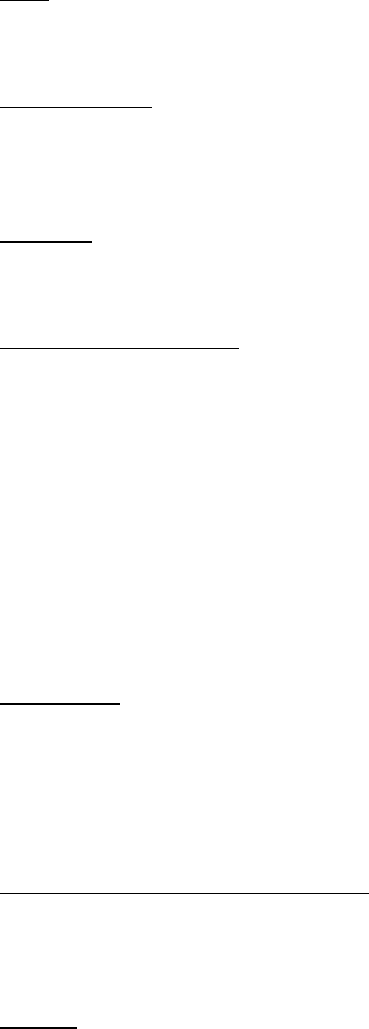
COMDTINST 5216.4E
CHAPTER 1 CORRESPONDENCE MANAGEMENT
A. Standards.
1. Tone. The Coast Guard’s image and effectiveness may be impaired if correspondence is
difficult to understand, disrespectful, or impersonal. DHS emphasizes a unity of effort,
and to never apologize for doing your job.
2. Responsiveness. Always include a point of contact, return telephone number, and email
address when your correspondence is likely to prompt a reply or inquiry. Respond to
every question in incoming letters, and address any untruths, misstatements, or
inflammatory comments.
3. Accuracy. It is vital that responses contain the most up to date and accurate information.
If metrics are included, they must be verifiable with a point of contact and date of
origination. All content should be free of typographical errors and formatted correctly.
4. Spelling and Corrections. Webster’s Third New International Dictionary provides correct
spelling not otherwise appearing as standard preference in the GPO Style Manual. In
some circumstances, spelling may also be required to vary from standard American
English to British English (i.e., United Nations and other specialized global forums).
Good judgment of the writer should be used in these circumstances, and should be
documented on the Digest, Form CG-4229, or routing form used to avoid repeated
corrections. For correspondence products developed for use within the United Nations,
beyond routine correspondence, the Concise Oxford English Dictionary (12
th
Edition), is
the current United Nations standard for spelling within the intergovernmental
organization, and its specialized agencies such as the International Maritime Organization
(IMO) and the International Civil Aviation Organization (ICAO). Appendix A of this
Instruction provides writing resources including where to borrow a dictionary.
5. Use of Italic. Italic is used to differentiate or to give greater prominence to words and
phrases. Overuse is to be avoided. The names of aircraft, vessels, and manned spacecraft
are italicized. The prefix is never in italic, nor are related industry brand names. For
example, the tall ship Eagle or CGC Eagle is correct. Variations may occur, such as
providing the class and hull number. For example, the Fast Response Cutter CGC
Benjamin Bottoms (WPC 1132).
6. Hyphenation and Separation of Words. Use hyphens sparingly and never hyphenate a
word at the end of a page. Avoid separating words in close association such as a person’s
name, abbreviated titles, and dates. If a full name must be split, do so after the first
name, when there is no initial, or after the initial. Never split the name of a vessel.
7. Spacing. Between sentences one or two spaces may be used after the period, as long as it
is consistent throughout the document. Paragraphs are typically left justified and single
spaced. A space (1 line) is placed between each paragraph. If providing a hyperlink at
the end of a sentence, it is best to leave an extra space before the period so the
punctuation does not become part of the hyperlink and the reader may easily link to it.
For example, visit the Coast Guard official website at www.uscg.mil/ .
2

COMDTINST 5216.4E
8. Paragraphs and Subparagraphs for CIs and Lengthy Reports. Paragraphs and
subparagraphs may be arranged as the example illustrates below this paragraph.
Variations of report format may occur based on the needs of the requestor. CI’s begin
with a chapter after the table of contents or introduction (if applicable) and is followed by
a section letter beginning with A. Note that general correspondence will have slightly
different outlines without the chapter or section, see Chapter 2 for memoranda guidance.
Example:
A. The number of levels and the width of the column determine alignment and
indentation. For Instructions, chapters are followed by sections (A., B., C.,
etc.). (Note the text starts on space 5).
1. A set space following the identifier aids alignment. Correspondence begins
with number 1 followed by a period and double space as the first paragraph.
Subsequent paragraphs are numbered sequentially. Similarly for
Instructions. (Note the text starts on space 5).
a. Usually, typefaces and sizes are chosen to agree with the hierarchy of the
head breakdowns. Subparagraphs are formatted to ensure the first item of
the subparagraph is aligned with the first letter of the first paragraph.
(Note the text starts on space 5)
(1) Align runover lines with the first word which follows the number or
letter aids in readability. All Correspondence and Instructions follow
the same formatting starting with this subparagraph all the way down
to (aa).
(a) It is important to vary (alternate) the use of letters and numbers in
any outline.
(i) The lowercase Roman numerals (i), (ii), etc. may be used as
parts of the outline or to identify subparts of any previous
parts.
(aa) When absolutely necessary, double (or triple) lowercase
letters may be used.
9. Date Stamps. Type or stamp the date on the same day that correspondence is signed.
The format for a memorandum is typically: 4 January 2034 or 4 Jan 2034. However,
some date stamps may read JAN 04 2034, or 04 JAN 2034, which is also acceptable. The
format for letters is January 4, 2034. If using a date within the content of
correspondence, use the format 4 January 2034. The year may be omitted if it is
understood (i.e., our meeting on 4 January).
3
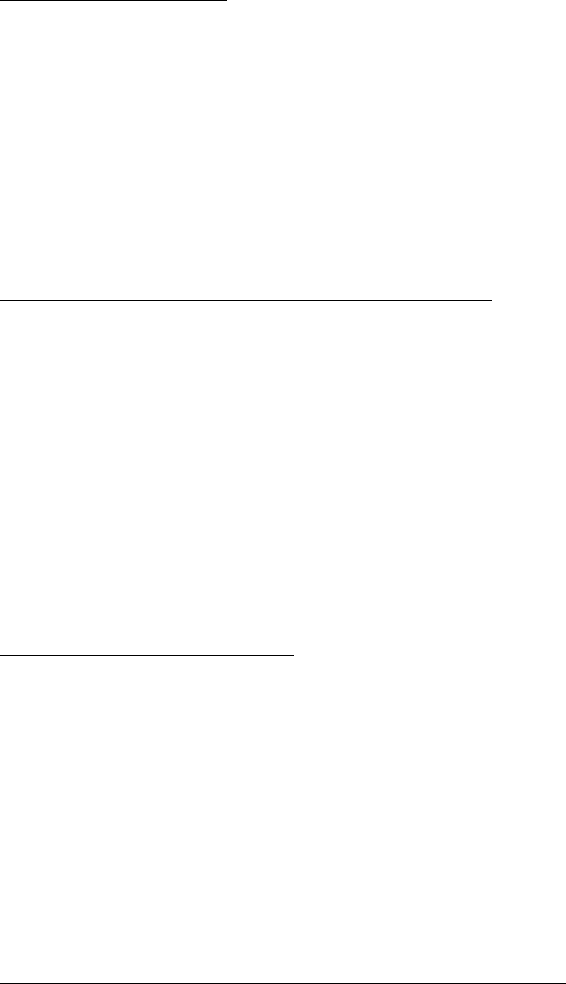
COMDTINST 5216.4E
10. Expressing Clock Time. Time is typically expressed representing either a 12 hour clock
(civilian time) or a 24 hour clock (military time) based on the full 24 hours in a day. The
preference in general correspondence is to use the 24 hour clock to avoid confusion
across time zones. Military time must be expressed in the memorandum as a group of
four digits, from 0001 to 2400, based on the 24 hour clock system. Civilian time is used
when writing letters and must be expressed as ante meridiem (a.m.) or post meridiem
(p.m.), meaning before and after midday, as in this example: 1 a.m. (not 1:00 a.m.). By
convention 12 a.m. denotes 12 midnight and 12 p.m. denotes 12 noon. The O’clock
expression is not used. Some technology and office tracking systems may default to the
12 hour clock, and the user should use sound judgment to reconcile the differences.
11. Electronic, Original Handwritten, and S-Signatures. A digital signature is a technology
that provides a valid method of electronic signature. A digital signature means the owner
of a private signing key uses that key to create a unique mark (the signature) on an
electronic document or file. An original handwritten signature is also known as a “wet”
signature because ink was once required to dry. An S-signature is made by non-
handwritten means through electronically or by typing and is placed in between two
forward slash keystrokes. Chapter 5 in this Instruction provides discussion on electronic
signature including the basic S-signature. Note that other electronic signature formats
maybe used when authorized such as for recruiting purposes when the signatory does not
possess a common access card. This type of signature may be considered a qualified
electronic signature which requires face-to-face identity verification (in-person or virtual)
and is considered an equivalent of a handwritten signature.
12. The Plain Writing Act of 2010. The Act’s purpose, per Reference (a), is to improve the
effectiveness and accountability of Federal agencies to the public by promoting clear
Government communications that the public can understand and use. This Act
emphasizes writing that is clear, concise, well-organized, and consistent with other best
practices appropriate to the subject and intended audience. Therefore, the Coast Guard
writer should avoid jargon, redundancy, ambiguity, and obscurity. In addition, DHS
encourages every employee to have a basic understanding of plain language and its
benefit. The DHS plain writing website is available at
dhsconnect.dhs.gov/org/offices/esec . The Coast Guard writer should use their best
judgment based on what is being written with an emphasis on plain language and their
final audience. Appendix A of this Instruction provides writing resources.
13. Accessible Systems and Technology Program, Section 508. All Federal agencies are
responsible for ensuring their information and services are accessible to persons with
disabilities, as defined in 29 U.S.C.A. § 701. This includes information technology tools
and electronic technology content, such as documents, web pages, presentations, social
media content, blogs, and certain emails. The United States Access Board is responsible
for developing Information and Communications Technology (ICT) accessibility
standards in accordance with Reference (a) and (b). In January 2017, the U.S. Access
Board issued revised guidelines and standards which may be reviewed at access-
board.gov/ict/. The details are too vast to list in this Instruction, however correspondence
writers need to consider accessibility of their electronic products. Importantly, GSA
provides a government-wide IT Accessible Program and provides support on how to
4

COMDTINST 5216.4E
create written products and test for accessibility. This support site is available at
Section508.gov/create and an overview may be read at Section508.gov . Note that
Section 508 accessibility does not apply to hard copy printed correspondence. Images
and decorative characters in electronic content that add little value should be avoided. If
an image is used, and the correspondence is sent electronically, it must be tagged with
alternative text describing the image to ensure accessibility. Further guidance on how to
comply with Reference (b) may be obtained from the Coast Guard’s Office of Accessible
14. Enclosure Term Preference. The Coast Guard uses “enclosure” to supplement additional
material sent with correspondence either in paper or electronic format. DHS uses the
term “attachment” in its reference material. Note, an “Appendix” is typically used for
Instructions. An enclosure is separate from the primary correspondence, and reflects the
“act” of enclosing a separate artifact of relevance (i.e., other document, award, or tangible
item) to the primary correspondence (i.e., memorandum or letter).
B. Copies, Stationery, Addressing, and Mailing
1. Copies, Files, and the Paperwork Reduction Act of 1995. To maximize utility, when
practical and not prohibited, use both sides of the paper for copies. Official
correspondence electronically sent to the Office of the Federal Register (OFR) must be
single sided. Limit color copies to final prints to save on color toner and paper.
Specifically, minimize the cost to the Federal Government of creating, collecting,
maintaining, using, disseminating, and disposing of print information. Centralize copies
whenever possible to eliminate redundancy. The originator has an obligation to keep the
original file in accordance with the Records & Information Management Program Roles
and Responsibilities, COMDTINST 5212.12 (series) for guidance. Avoid redundancy
when correspondence is forwarded for signature especially when correspondence is short,
routine, and self-explanatory. Be sure to limit information and courtesy copies to include
only those with a genuine need to know. Note that the Coast Guard legal department
must comply with legal and court-mandated procedural rules and regulations which do
not always match the requirements of the Paperwork Reduction Act. This is especially
true in the amount of copies that have to be served to the court and other parties
regardless of whether the correspondence is short or self-explanatory.
2. Stationery. The Coast Guard defines stationery as paper stock used for official letterhead,
which includes return addressed envelopes. Standard software allows Coast Guard writers
to format stationery in electronic form. Customized print stationery orders may be placed
through the Government Publishing Office (GPO) Regional Publishing Procurement
Office (RPPO) for Flag Officer and Senior Executive Service (SES), commanding
officers of Headquarter units, Activities Europe, and the Master Chief Petty Officer of the
Coast Guard and others authorized in accordance with Printing of Executive Stationery
for Routine Use, Official Ceremonies, and Special Events, COMDTINST 5603.1 (series).
Contact a Printing Specialist within Directives and Publications Division (CG-612) at
HQS-SMB[email protected] for stationery ordering assistance.
5

COMDTINST 5216.4E
3. Addressing. Addressing correspondence and envelopes will be prepared as prescribed in
the Mail Management Program Policy, COMDTINST 5110.1 (series). Validate the
address and use staff codes whenever possible. Choosing the correct size envelope or
mailer is important as excessive packaging can lead to increased cost.
a. Format addresses on envelopes with a uniform left margin and a maximum of 47
characters and spaces per line. Center the address and single space each line, blocked
one below the other. Do not indent lines. Leave at least a ½ inch margin from the left
and right edges of the envelope and at least ⅝ inch from the bottom of the envelope.
Include all required information within addressee and return addressee areas. Do not
type in the margins or clear area.
b. Font for envelopes must be block style and not stylized. Use Times New Roman,
Courier, Calibri, or similar new Sans serif. Return addresses may be either preprinted
in similar style, affixed with a label, printed, or stamped in blue or black ink, with
preference of blue ink for Coast Guard standardization. Handwritten addresses are
unacceptable.
4. Official Mail Address Format. All official mail must have a complete and proper return
address. Official mail return addresses must notate in bold “DEPARTMENT OF
HOMELAND SECURITY” in the upper left corner, directly above the return address and
also notate “OFFICIAL BUSINESS" in the upper left corner, directly below the return
address. Do not overlap the return address in the delivery address area. Be careful not to
slant the address, as the lines must be parallel to the top and bottom edges of the
envelope. Avoid punctuation except for the hyphen in the staff symbol and zip code.
Limit address to a maximum of 5 lines. See Mail Management Program Policy,
COMDTINST 5110.1 (series) for more specific examples.
Return address “from” sample:
DEPARTMENT OF HOMELAND SECURITY
LINE 1
LINE 2
LINE 3
LINE 4
LINE 5 (must be CITY, STATE, and ZIP CODE +4)
OFFICIAL BUSINESS
Delivery address “to” sample:
LINE 1 INFORMATION
LINE 2 ATTENTION (OFFICIAL TITLE/NAME)
LINE 3 DELIVERY ADDRESS LINE 1 (STREET)
LINE 4 DELIVERY
LINE 5 (must be CITY, STATE, and ZIP CODE+4)
5. Window Envelopes. Unless for specialized use or mass mailing, the use of a window
envelope is typically discouraged. Do not use window envelopes for sensitive mail or a
content of a personal nature. High level officials should not receive window envelopes.
6

COMDTINST 5216.4E
6. Envelopes and Mailers. Use envelopes or mailers slightly larger than the material being
mailed and of sufficient strength to protect the contents during mail handling and
delivery. Use number 10 standard letter size envelopes whenever possible. With a size
of 4 ½ x 9 ½ inches, a standard paper size 8 ½ x 11 inches may be folded in thirds.
Generally, documents with four or less pages should be folded and mailed in a letter size
envelope. To qualify as First-Class Mail®, envelopes must be at least 3 ½ inches by 5
inches (3 ½ inches by 5 ½ inches for international), and no larger than 6 ⅛ inches by 11
½ inches and less than ¼ inch in thickness. Use large envelopes for mailings that cannot
be folded (i.e., photographs, certificates, negatives, and bulk material, etc.). Note that
envelopes larger than 12 inches by 15 inches exceed the flat rate and the cost is
significantly higher.
7. Mailing and Stewardship. Consolidate outgoing mail whenever possible and avoid
excessive packaging. All mail generated on the same day and destined for the same
unit/location shall be placed together inside an appropriate mailer such as a large
envelope or flat rate box and sent via USPS or commercial carrier (FedEx/UPS, etc.)
endorsed “Consolidated Mail.” The receiving mailroom will open and sort the contents
for unit/location delivery.
8. Internal Mail. An official U.S. Government messenger envelope (Optional Form 65B) is
used to send mail and packages between offices/units located within the same
geographical area, building, and/or base through a centralized mail center. Enter the
appropriate address including a suite, room, STOP, or office number, if available.
Appropriate mailing label standards remain the same for the contents. Those who have a
Standard Workstation account must keep their current location and status updated on the
Global Address List (GAL) to avoid misrouting. Check with your local mailroom for
options on this service, often referred to as guard mail.
9. Forms of Address, Salutation, and Complimentary Close on Letters. The DHS Executive
Correspondence Handbook (series) style and usage guidelines provide some examples of
models of address and salutation. Appendix B of this Instruction provides examples of
Coast Guard models of address and salutation. A comprehensive source for DoD models
of address is found in the United States Air Force Handbook AFH33-337, titled Tongue
and Quill which is found at the Air Force E-Publishing website e-publishing.af.mil/ and
in Appendix A. The Coast Guard style preference is to spell out military models of
address fully, such as Dear Commander Lee, or Dear Petty Officer Gonzalez. For
civilians if a title is not known, then using Mr., Ms., or Mx. such as Dear Mr. Nguyen,
Dear Ms. Williams, or Dear Mx. Smith should be used. Mx. is the most accepted gender-
neutral title and should be used if a preference is unknown. If a title is known, the title
should be used, for example Dear Mr. Ambassador Kim, or Dear Dr. Crawford. If a
person specifically refers to themselves as Mrs., this may be used, otherwise the
preference is Ms. To address girls under the age of 12 use Ms. or Miss, and to address
boys under the age of 12, use Mr. If the name or gender is unknown, use a professional
or organizational title, such as Dear Director of Health and Safety. If it is known that the
recipient does not prefer any of these titles, begin the greeting by using the individual’s
first name, middle initial, and last name (i.e., Dear Calypso N. Seabrook).
7
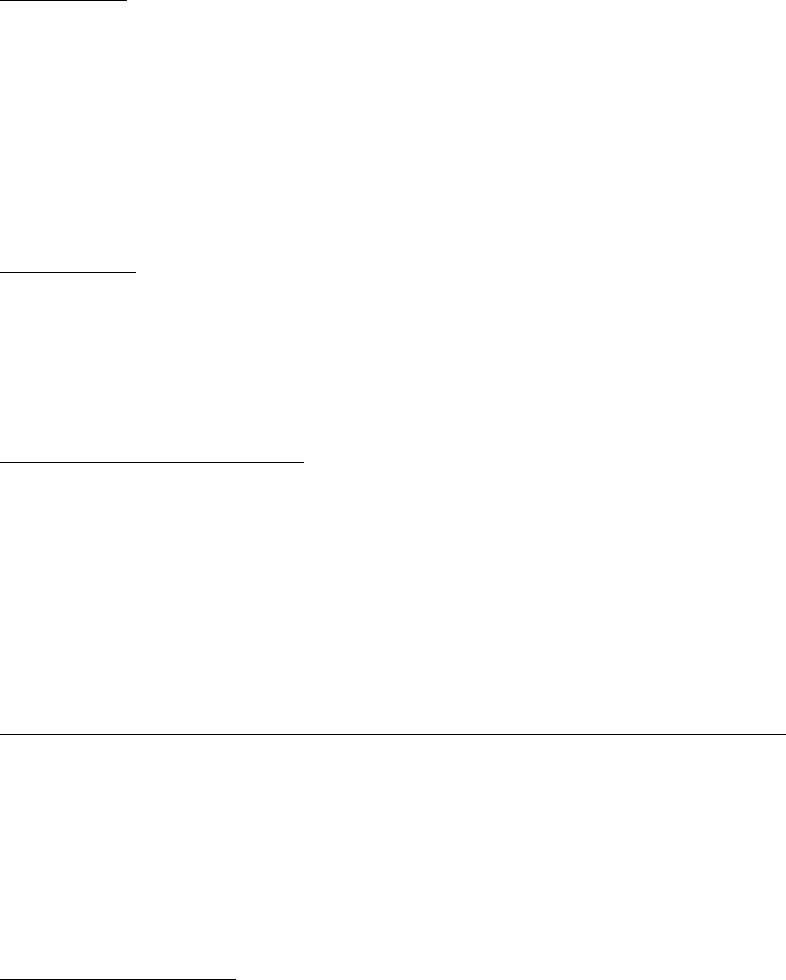
COMDTINST 5216.4E
C. Coast Guard Correspondence Policy.
1. Coordination. Correspond through your formal chain of command. This is especially
important on substantive matters such as command decisions, policy issues, and other
official correspondence. Such routing keeps intermediate commands informed and
allows them to comment or approve. The coordination process may vary depending on
the unit’s formally established routing practice, such as Microsoft SharePoint or other
formalized processes. Authorized subordinates of different units may correspond directly
with each other on purely routine matters. Clearly identify primary points of contact on
coordination and local practice. Chapter 4 provides more details on policy for
coordinating correspondence with the relevant stakeholders in the Coast Guard.
2. Memorandum. Use a memorandum within the Coast Guard or with other federal
agencies. Do not use the memorandum format when corresponding with the families of
military personnel, private business, or the public. The use of the word memoranda is
plural, and therefore an abbreviation of memos is frequently made. Memorandum is
singular. A Standard Operating Procedure (SOP) may be placed in memorandum format.
Chapter 2 provides more details on the policy for drafting and using a memorandum.
3. A Memorandum for the Record. A Memorandum for the Record is the same as a
standard memorandum, except the writer must change the subject line to “A
Memorandum for the Record.” Use this format to document decisions or policy that is
agreed upon during a conversation that is not documented elsewhere. If there is a note
taker or transcript documenting the decision, it is unnecessary to create this
correspondence artifact unless requested. It is best to exchange this memorandum
between the agreeing parties and record the interaction. The writer may consider
outlining each paragraph in order of purpose, problem, scope, agreement or
understanding, and effective date. However, it is at the discretion of the writer.
4. Memorandum of Understanding (MOU) and Memorandum of Agreement (MOA). A
Memorandum must not be confused with an MOU or MOA. Originating offices of an
MOU/MOA must ensure all interested program offices and the servicing legal office have
reviewed. The writer must determine whether it would be appropriate for the
Commandant to sign as a matter of protocol, even if the authority to sign has been
delegated to an Assistant Commandant or other command. Memoranda of
Understanding/Agreement, COMDTINST 5216.18 (series) provides more details on
policy guidance with examples.
5.
White Paper/Issue Paper. This correspondence is an authoritative issue paper used by
many governments around the world and is often used by U.S. agencies. The white paper
derives its name from the white paper stock cover on the issue paper. It typically
includes research, data, and discussion in the form of a report or guide to help integrated
product teams or decision makers understand an issue, solve a problem, and/or make a
decision. The Coast Guard writer must be cautious not to plagiarize, especially be
vigilant when using search engines that are reliant on artificial intelligence that may
originate from copyright materials. As white papers in the Coast Guard are typically
internal communications, they may be enclosed to, or placed in a memorandum when
routing.
8

COMDTINST 5216.4E
6. Staff Study. Staff Studies are often written as a report and placed in official
memorandum form. The purpose of a Staff Study is to engage in a process of critical
thinking and problem solving, to analyze a problem, draw a conclusion, and to make a
recommendation(s). This is an accepted format for problem-solutions for the Joint Chiefs
of Staff. The format is typically organized in the following order: Problem; Facts
Bearing on the Problem; Discussion; Conclusion; and Action Recommendation.
Requestors may have alternative organization requirements. Additional structure and
details may be found in United States Air Force Handbook AFH33-337, Tongue and
Quill available at e-publishing.af.mil/ .
7. Business Letter. The business format will continue to be used with industry, local/state
governments, and private citizens. A letter may also be used to address individuals when
a personal tone is appropriate, such as in letters of commendation or condolence. Chapter
3 provides more details on policy for the letter.
8. Award Letters, Formats, and Forms. Both the Coast Guard Military Medals and Awards
Manual, COMDTINST M1650.25 (series) and Coast Guard Civilian Awards Manual,
COMDTINST M12451.1 (series) provide detailed guidance. Some awards are issued on
specific forms, the writer should refer to the award authority for further guidance.
9. Email and General Messages. General Messages may be used to communicate
administrative information, which is defined as messages related to the organization of
service forces, personnel management, unit logistics, individual and unit training,
discipline, program changes, and other matters that are not operational. Other
mechanisms to communicate this information include large official email distributions.
10. Email Transmission and Etiquette. Correspondence must reflect professionalism even
when delivering course corrections and/or providing feedback to correct deficiencies.
Effective communication in the workplace should encourage a culture of respect.
Maintaining a professional email tone is essential. An individual who is assigned an
official Coast Guard email address must utilize it properly. This means being respectful
in correspondence with others, even when discussing controversial or conflicting content.
Email fonts and contrasts must be easily readable in standardized dark ink. Drafters must
use 11 or 12 font size, however size 12 is preferred. Quotes on signature footers must be
kept at a minimum, remain professional, and not contain hyperlinks to non-government
sponsored internet sites, including commercial vendors. The Coast Guard writer must be
considerate of who they copy on emails and consider need-to-know and relevance to the
receiver of the email. Blind copies may be occasionally necessary but should be
generally avoided. Lengthier emails, as a best practice, should contain a Bottom-Line-
Up-Front (BLUF) summary. Before sending, the Coast Guard writer should double
check their email draft to ensure that the content is concise and that both spelling and
grammar are correct. If the email content contains a heightened level of emotion,
especially anger, the Coast Guard writer should not send without first pausing to
reconsider the content, and then recraft at a later time after heightened emotions have
reduced. Be considerate and respectful including in both salutations and complimentary
closings.
9

COMDTINST 5216.4E
11. Electronic Meetings and Messaging. Day-to-day business is often conducted through
virtual platforms such as Microsoft TEAMS. Messages sent through Microsoft TEAMS
must remain respectful. Many meetings are subject to transcriptions, and some may be
recorded. Meeting hosts should announce at the start of the meeting if the meeting is
going to be recorded. Attendees should assume a transcript will be created unless
otherwise noted. This is often the case for accessibility needs or general documentation
of discussions and decisions. When scheduling a meeting with a large number of
attendees, hosts must consider accessibility.
12. Standard Subject Identification Codes and Serial Numbers. The Standard Subject
Identification Codes (SSIC) provides guidance on the four- and five-digit numbers that
represent common Coast Guard subjects. Place an SSIC (known as a file number) on
each page of a memorandum or letter. Find the SSIC that closely represents your subject.
Be sure to file all correspondence by SSIC and date, in chronological order for the
calendar year. The use of DoD SSIC codes must be discontinued, as the Coast Guard has
its own code structure, as published by Commandant (CG-611). A copy of the SSIC list
may be located on Microsoft SharePoint with Commandant (CG-611) or on Microsoft
Pixel dashboard Directives Library “CG Pubs Search” dropdown “Other Publications” –
type keyword “Publication SSIC List.” The Coast Guard has additional SSIC codes that
DoD does not use.
13.
Samples, Forms, Templates, and Command Long Titles and Abbreviations. The Coast
Guard has specifically created “easy edit” templates for each correspondence type
contained in this Instruction. Appendix C provides a listing of correspondence samples.
A copy of the easy edit templates may be located on Microsoft SharePoint with
Commandant (CG-612) or on Microsoft Pixel dashboard Directives Library “CG Pubs
Search” dropdown “Other Publications” – type keyword “template” and select the
appropriate easy edit template. Appendix D contains a list of correspondence related
forms. Note that forms are designed in Arial font to align with DHS direction. Appendix
E contains a list of the long titles and abbreviations for commands/units.
14. Paper. The Coast Guard uses business standard size 8½ x 11 inches white bond paper.
Other sizes may be used, such as legal size 8½ x 14 inches, and other GPO authorized
and/or specialized stationery.
15. Type Fonts and Sizes. Use 12 font point size “Times New Roman” for official
correspondence, unless authorized by another authority. Avoid unusual style types in
official correspondence, as it gives an unprofessional appearance. While there are many
types of typography and design choices, it is best to align to foundational principles of
readability for both paper and web content. When creating official correspondence, use
type fonts and sizes that make correspondence easy to read and understand, and use
standardized software to improve accessibility compliance. For emails use Times New
Roman, Courier, Calibri, or similar new Sans serif (Aptos is a San serif font introduced in
2023 and expected to be incorporated into Microsoft products to replace Calibri).
10
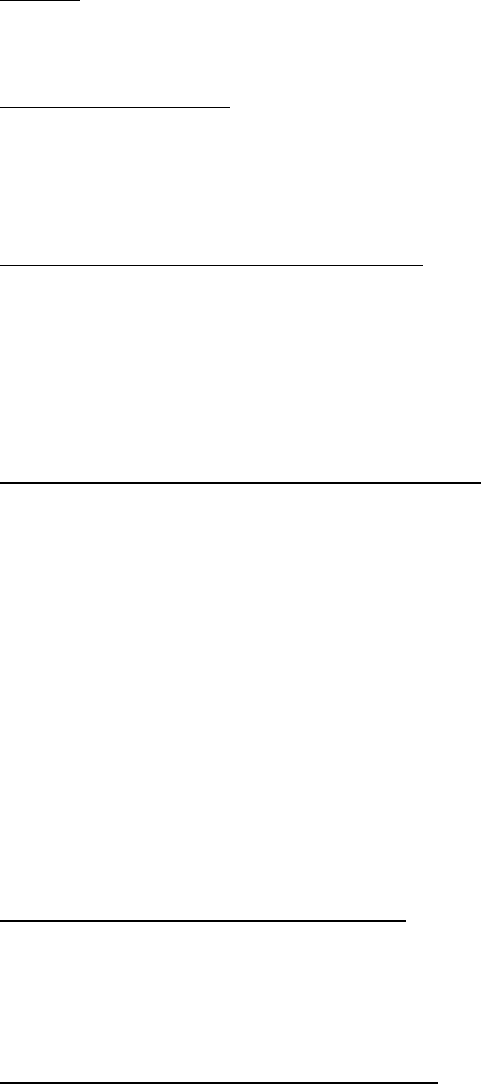
COMDTINST 5216.4E
16. Margins. For correspondence on standard size paper, allow 1 inch top, bottom, left, and
right margins on each page. Do not right justify, center justify, full justify, or use
proportional spacing.
17. Print and Electronic Ink. Black ink on white paper is the preferred choice for official
business content. Date stamps, when applicable, should be in black. Electronic content
shall ensure color contrast meets Section 508 standards.
D. Department-Level Correspondence Policy and Templates
1. Department-Level Correspondence Formats. The Coast Guard works with the DHS
Office of the Executive Secretary (ESEC) component liaison to receive and submit
necessary Department-level correspondence. This includes Briefing Books and
Interagency Coordination, Administrative, Budget and Logistics Matters, and content for
Congressional Actions. There are many points of contact for the differing and
specialized correspondence needs which can be found in the DHS Executive
Correspondence Handbook (series) at dhsconnect.dhs.gov/offices/ESEC .
2. Controlled DHS Executive Level Correspondence. In support of controlled
correspondence, specific offices within each component, including the Coast Guard, are
designated to manage their agencies’ individual correspondence process and serve as the
primary point of contact for Department-wide coordination and clearance needs. The
ESEC manages letters and other documents addressed to the Secretary and Deputy
Secretary. The ESEC determines the parameters of the correspondence, including the
DHS component lead, which components need to clear the response, the appropriate
signing official, and the priority and urgency of the response. The ESEC reserves the
right to decrease the number of days allotted or request a response be expedited. High
priority correspondence has a 10 business day turn around, while routine and general
public correspondence has a 15 business day turn around. The Coast Guard adheres to
this timeline. Guidance on Department-level coordination and clearance, responses,
interim responses, thank you notes, enclosures post-engagement letters, congratulatory
and employee recognition letters may be found in the DHS ESEC Executive
Correspondence Handbook (series) at dhsconnect.dhs.gov/offices/ESEC .
3. Department-Level Memoranda (or memo). Memoranda generated by a Component and
intended for the Secretary, Deputy Secretary, or Chief of Staff’s review or approval
generally fall into three categories: Action memo (seeking decision or action), Cover
memo (summary or background of primary document), and Information memo (Coast
Guard to DHS ESEC communication).
4. Templates for Department-Level Memoranda. The ESEC has created specific templates
for each memo type containing important completion instructions and formatting
requirements. These templates are internally available at
dhsconnect.dhs.gov/offices/ESEC .
11

COMDTINST 5216.4E
5. Templates for Department-Level Congressional Reports. Congressional Reports have
specialized guidelines. A Congressional Report template is provided in the ESEC
handbook in hyperlink under the Congressional Reports Guidance and is downloadable at
dhsconnect.dhs.gov/org/offices/esec . The Coast Guard writer should work with their
assigned point of contact for specific instructions and may seek additional advisement
from the Coast Guard Office of Congressional Affairs (CG-0921) as applicable at HQS-
12
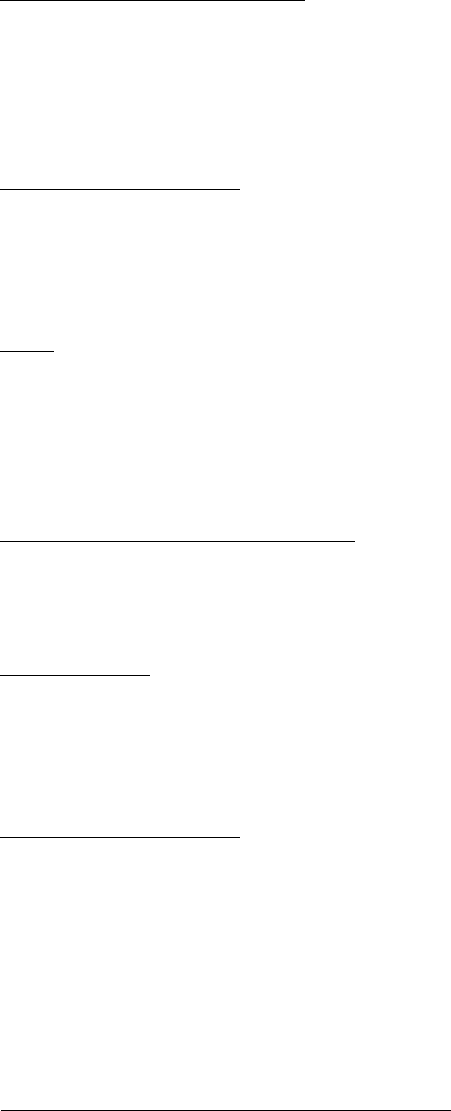
COMDTINST 5216.4E
CHAPTER 2 THE MEMORANDUM
A. Memorandum Use in the Coast Guard
1. The Coast Guard Memorandum. Official correspondence utilized to communicate both
within the Coast Guard and within the framewo
rk of the Federal Government. The Coast
Guard has a par
tially customizable memorandum header image similar to letterhead, and
the memorandum should not be sent without this header image. See Chapter 1, Section C,
paragraph 13 for template instructions. The title memorandum is in Times New Roman
font size 16.
2. Memorandum Stationery. A memorandum must use official electronic or print stationery
titled Memorandum. This memorandum letterhead is predominantly electronically
generated and drafted from a template. Contact the Printing Specialist within CG-612
assistance is needed.
3. Dates. Every memorandum must include a date. The date may be a stamp operated by
hand or typed in. Place the date below the SSIC on the actual date the memorandum was
signed by the final signatory in the routing chain. Sometimes dates will be added by a
signatory during the routing process and penned beside the signature. This often occurs in
longer routing chains including with
endorsements. This is not a requirement, rather an
allowable prefer
ence indicating the time between signatures.
4. SSIC on First, and Subsequent Pages. Place an SSIC on each page of the memorandum.
If a memo is two or more pages, the subject line, the date, and the SSIC need to appear on
all pages. The SSIC list may be found in the Directives Library under “Other
Publications.”
5. Ser
ial Numbers. A serial number may be locally generated if needed for high volume
correspondence and tracking. When there is a local serial number, this number is typed or
stamped either immediately above the SSIC
, to the right of the SSIC with a forward slash
(SSIC/serial number), or underneath but before the date stamp. This is typically a unit
preference.
6. From and Signature Line.
Every memorandum must have a “From” line. Use the
signer’s name or the commanding officer’s abbreviated title and staff symbol as
appropriate. Occasionally, a memorandum will be sent from multiple people concurrently
(such as from DCO and DCMS). In this case, a space (one line) separates the names and
titles of the sen
ders. Capitalization or upper/lowercase of the name is authorized. The
Unit/title must be capitalized. The signing official will sign on the “From” line. The rank
may be used; however, very long names can be problematic with limited
spacing. The
Coast Guard writer should use their judgment and remain consistent within
the
memorandum.
7. Paragraphs and Subparagraphs for Memoranda.
Each first level basic paragraph is
numbered. 1., 2., 3., and so on. If there is a single paragraph, numbering is optional. Use
a wrap text for each first level basic paragraph. Wrap text allows text to wrap to the next
13

COMDTINST 5216.4E
line within a document when it reaches the edge of the page or cell. Subparagraphs are
listed as a., b. c., and so on. Subparagraphs are not wrapped text, instead they are tabbed
out (5 spaces). Bullets are authorized for subparagraphs. Consistency is key, therefore
do not use numbers, letters and/or bullets on the same level. This would not be
acceptable. For reference, typical level alignment is 1., a., (1), (a), (ii), (aa.), and finally
(aaa). Be concise and minimize the use of several tier levels as this creates complicated
correspondence. Note, two subparagraphs or two bullets are required when used,
otherwise the content should become a first level basic paragraph.
8. Signing a Memorandum “for.” If signing “for” another Coast Guard member, the word
“for” in lower case shall be penned to the left of the signature line and signed. If using a
template for digital signing, follow the template prompts, which may place the “for” and
an electronic signature box to the slight right of the “From” line. Both are acceptable.
9. To Line. Address correspondence to the office or commanding officer of a unit unless
the memorandum is being sent directly to an individual. A memorandum may be
addressed to “All Personnel (name unit).” This may be appropriate when issuing a unit
SOP.
10. Thru Lines External to Command/Unit. Use a “Thru” line when one or more offices or
units outside your own must see a memo before it reaches the addressee. List
commanding officers in the “Thru” line. The routing order is numbered. When going up
a chain of command, list the next higher command from your own first. When going
down a chain of command, list the next lowest command.
11. Thru Lines Internal to Command/Unit. “Thru” line may be used when writing an internal
command memo requiring chain of command visibility.
12. Subject Line. A concise subject line is written in capital letters and is typically 10 words
or less. The exact subject line is repeated on subsequent pages in the header.
13. References. Unless required by your office, avoid unnecessary or complicated
references. Avoid using obsolete relics, such as the abbreviation NOTAL, which stands
for “not to,” or “nor required by.” A memorandum may list the most important
references in the last communication or no reference at all. When the Coast Guard writer
responds to an earlier communication, the writer need not list the same references in the
opening. Instead, the writer should proceed to the main point.
14. Reply to the Attention of. If a primary point of contact differs from the Coast Guard
signature on the memorandum, include a point of contact name and phone number. This
may seem redundant, however adding a technical specialist or program manager may be
appropriate depending on the content of the memorandum. Delete this section if not
used.
15. Consistency. A Coast Guard writer should be consistent in style and format in all
correspondence-writing, including the memorandum. For example, the way staff
symbols, and/or titles are written in the “To,” “From,” and “Thru” lines should be
consistent.
14
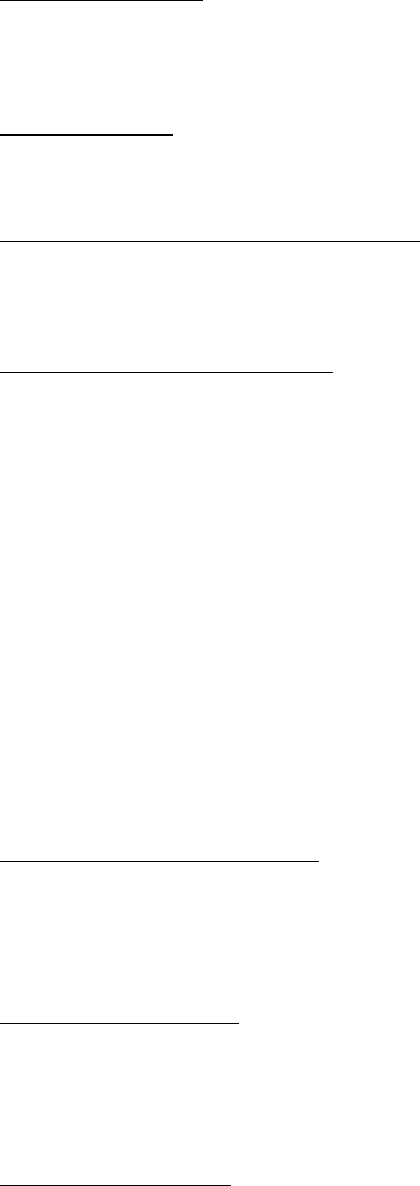
COMDTINST 5216.4E
16. Pen and Ink Changes. Where practicable a memorandum should be error free. Internal
correspondence should not include more than two pen and ink changes unless the
memorandum is routed for input from another authority within the Coast Guard.
Memoranda to other agencies should not include pen and ink changes.
17. Ending the Memo. Place the # symbol centered two lines below the last paragraph on the
third line to indicate the end of the memorandum. For Copy and or Distro ensure two
line gap before and after the # symbol.
18. Second and Subsequent Pages of the Memo. Enter a page number centered at the bottom
footer.
B. Decision Memorandum.
1. Creating a Decision Memorandum. When requesting a decision from a single addressee,
it is appropriate to type a decision block two lines below the last paragraph, but before
the closing symbol “#” of the memo under the body of the memo. If the decision maker
is not a commanding officer or higher, indicate the decision authority by position title.
Below is a suggested format, however, “other” may be omitted. There must be two line
spaces between “Other” and the closing symbol such that the closing symbol is placed on
the third line. If space is limited, it is appropriate to have less spaces for practicality.
Example:
_______________________ Approve
_______________________ Disapprove
_______________________ Other
#
C. Endorsements within a Memorandum.
1. Endorsement(s) to Memorandum. An endorsement is used to comment on a
memorandum in routing, based on the original memorandum, or is used to comment on
any subsequent endorsement during the clearance/routing process. Because of changes
made in routing, the order of any remaining “Thru” addressees could also be altered, and
more may be added.
2. Same Page Endorsement. An endorsement should be completed on the same page as the
original, if possible. However, technology security features may not make this possible.
If this is not possible, start a new page endorsement. If two or more “Thru” addressees
remain, re-number the addressees in parentheses on the endorsement (1), (2), for
example.
3. New Page Endorsement. When technical challenges emerge, or additional content is
likely to be added exceeding the original page, starting a new page for an endorsement is
acceptable. The writer’s judgment should be used. Every new page endorsement must
start with clean stationery (no memorandum heading) and repeat the SSIC just above the
15
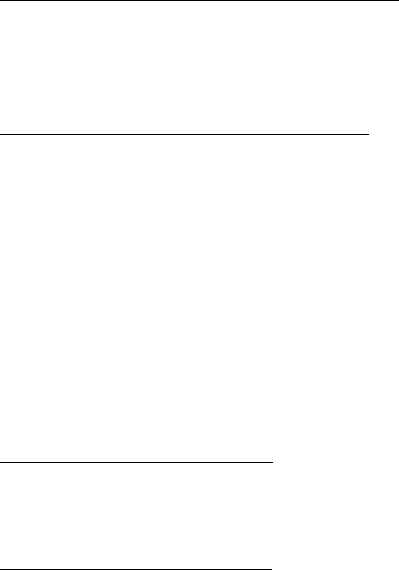
COMDTINST 5216.4E
date. Identify the basic memo in the endorsement-number line and use the exact subject
line already used. Similar to the same page endorsement if two or more “Thru” addresses
remain, re-number them in parenthesis.
4. Endorsed as Approved without Comment. An endorser must sign and date the “Thru”
line if the endorsement package is being forwarded without comment. Approval is
implied. Any “Thru” addressees will count as signatures. Send copies to the action
addressee and to all “Thru” addresses who have yet to endorse the memo.
5. Providing Copies during Endorsement. Copies are to be provided for any earlier “Thru”
addressees, if requested, and to any earlier information addressee only if the endorsement
is significant, as described in this paragraph. Add these addressees to the “Copy” line.
Routine endorsements include “forwarded,” “forwarded for consideration,” and
“forwarded recommending approval.” Significant endorsements include “forwarded
recommending disapproval,” “readdressed and forwarded,” and those with substantive
legal or programmatic comments. Copies may be provided for any information
addressees the Coast Guard writer chooses to add. Include these in the “Copy” line. To
the right of each of these addressees, type the word “Complete” to show that the
endorsement includes copies of the standard memo, enclosures, and prior endorsements.
Always provide a copy for the originator of the standard memo and a copy for file.
6. References in Endorsements. Include only important references and do not duplicate
references already in the original memorandum. If adding additional references, continue
ordering in alphabetical sequence from the original memorandum.
7. Enclosures in Endorsements. On the enclosure line, do not repeat any enclosures shown
in the standard memorandum or prior endorsements. Send any enclosure you may add to
the action addressee. The enclosure’s importance will determine whether others before
your endorsement should receive it. Check with the originator to determine if they have
the enclosure or need a copy (it may be a standardized enclosure, and/or not practical to
send).
16

COMDTINST 5216.4E
CHAPTER 3 THE BUSINESS LETTER
A. Business Letter Use in the Coast Guard.
1. The Business Letter. Use the business letter to correspond with non-Federal entities
including individuals and businesses. Occasionally, a business letter may be used for
correspondence within Federal entities when a memorandum would not be appropriate –
such as a condolence or congratulatory letter.
2. Short Business Letters. A short letter is typically no more than 8 lines and contains less
than 100 words. It should be left justified, double spaced (2 lines) within paragraph(s),
and 1 to 2 paragraphs with complimentary closing. It should be placed on the page with
greater attention to visual appeal, side margins may be adjusted for custom text up to 2
inch side margins.
3. Letter Stationery. Every official business letter must begin with an official Coast Guard
letterhead to show the letter originates from the Coast Guard. This letterhead is
predominantly electronically generated, drafted from a template, or may be in print
format. Contact the Printing Specialist within CG-612 Directives and Publications
4. Letter Dates. Expressed in month-day-year. January 4, 2034. A comma separates the
numbers.
5. References. References may refer to earlier communications, typically referred to within
the body of the letter. However, if references are used, they may alternatively be labeled
using the same conventions as in a memo.
6. Text. Left justified, single line space (1 line) within paragraphs and avoid indenting or
numbering primary paragraphs. Depending on the nature of the letter, sub paragraphs
may be indented with letter and numbering in basic paragraph format.
7. Letter Addressee. If writing to a company, address the company with an attention line
“Attn:” on the inside address.
8. Salutation. Make the salutation align with the first line of the address. In a rare case, if
the Coast Guard writer does not know the name of the individual who will be receiving
the correspondence, use a collective salutation. While “Dear Sir or Madam:” may still be
used, consider a more modern approach such as “Dear [Applicant, Candidate, Colleague,
Recreational Boater, etc.].” The Coast Guard writer should use their best judgment.
9. Complimentary Letter Close. Use the capitalized word “Sincerely” for the
complimentary close. This should be placed on the second line below the text, ¼ inch to
the right of the center point on the page.
10. Enclosures. If the business letter has an enclosure, briefly mention the enclosure within
the text and indicate the number of enclosures below such as “3 Enclosures.” The Coast
Guard writer may also choose to list each enclosure with a description such as Enclosure
(1) Title of enclosure. Either format may be used.
17

COMDTINST 5216.4E
11. Copy Block. A “Copy” block may be used in a business letter. Include the address of the
person who is copied.
12. Blind Copy Block. A “Blind Copy” block is for internal distribution and for the original
file copy only. Do not list a “Blind Copy” on the actual letter sent.
13. Mail Window Letter. This letter is almost the same as a business letter, but the format
allows for mailing in a clear number 10 envelope window. The placement of the
addresses may need to be slightly modified, must take no more than 4 lines, must not
extend past the middle of the page, and not be sensitive or personal in nature. The
address must appear in the window regardless of how the letter might shift during
mailing. The U.S. Postal Service provides various window size requirements. Please
visit www.USPS.gov for additional information.
B. The Flag Letter.
1. The Flag Letter. The Flag Letter is issued by Coast Guard Admirals and Senior
Executives. It is typically written on specialty stationery with 1 inch margins on all sides.
The exact format of the Flag Letter is at the discretion of Admirals or Senior Executive
Service leaders. Considering the significance placed on these letters by recipients, the
overall appearance should be suitable for presentation or framing.
a. Format. This letter should be single spaced, unless it is less than 9 lines, then it
should be double spaced for visual appeal. Date upon signature, and indent
paragraphs with tabs. Tradition has placed this in 10 point Courier font. However,
Times New Roman 10 to 12 point font or similar may also be used. Signature blocks
are in all capitals. Enclosures are uncommon but may be used and are justified left
with the margin, two lines below the signature block. Only use a blind copy block for
a file record if needed. Do not place a blind copy block on the letter itself.
b. Administrative Remarks. Any military member receiving a Flag letter should have
the Flag Letter content submitted into an Administrative Remark. This action is
authorized by this Instruction. Also, see Administrative Remarks, Form CG-3307,
COMDTINST 1000.14 (series).
C. Letters Prepared for DHS and Other Branches of Government.
1. Letters prepared for DHS. DHS issues guidance and templates, updated as DHS
leadership preferences or congressional requirements change. For the latest templates,
please see the DHS Executive Correspondence Handbook (series) and associated
templates available at dhsconnect.dhs.gov/offices/ESEC .
2. Congressional Letters. The Coast Guard writer may seek advisement from the Coast
Guard Office of Congressional and Governmental Congressional Affairs (CG-0921) at
18

COMDTINST 5216.4E
CHAPTER 4 COORDINATION
A. Coordination Policy for the Originator and Coordinator.
1. Originator. The originator is located in the office where the correspondence is created
and coordinates by obtaining an agreement among offices that have a substantial interest
in a proposed correspondence action and/or document. An important responsibility of the
originator is to resolve major differences among stakeholders as early as possible. To
coordinate effectively, the originator must decide who the stakeholders should be before
the originating correspondence is signed with consideration for the impact of the
correspondence and the final audience. The Coast Guard Organizational Manual,
COMDTINST M5400.7 (series) can assist with identifying functional responsibilities,
however, due to organizational changes, additional research may be necessary to identify
both offices and individuals with equity.
2. Coordinator. The primary responsibility of the coordinator is to compile all comments
from each stakeholder. This coordination may occur through concurrent, sequential, and
conference clearance processes, and can be sent electronically or physically. Routing
Slip Form CGHQ-6046 may be useful. Microsoft SharePoint is often also used to
facilitate coordination.
3. Concurrent Clearance. Typically, the fastest way to obtain clearance is to utilize
Microsoft SharePoint or a similar clearance method commonly referred to as a Task
Management System (TMS) where the document is sent to all stakeholders at one time
with a suspense date. A Concurrent Clearance Form, CG-4590 may be useful to the
Coast Guard writer. If coordinating concurrently, be sure to consolidate comments into a
matrix listing. Comments are typically identified by reviewers as being administrative
(A), substantive (S), or critical (C). All comments must be reviewed, considered, and
incorporated where applicable. Substantive comments should be adjudicated, while
critical comments must be adjudicated. Any unresolved critical comments must be
provided to the higher signature authority, such as the commanding officer for final
adjudication. Consult with the servicing legal office or other subject matter expert as
needed, as some content may not be changed or waived by law. If during the concurrent
clearance process the critical or substantive comments change the content substantively, a
second concurrent clearance may be required.
4. Sequential Clearance. This correspondence clearance process is typically used for an
individual to review correspondence in sequence, often “up the chain” for final decision
or signature. When routing chains are short, sequential clearance is practical, as each
input is reviewed and adjudicated one at a time. At times this type of coordination is
placed in a physical folder with a paper routing slip, however the increased use of
electronic signatures in TMS makes electronic routing of the sequence faster and may be
required by the respective routing chain.
5. Conference Clearance. When the usual methods of coordination are not sufficient and
differences remain unresolved, an option is to gather coordinators for a meeting and seek
resolution. This is called conference clearance. This may be conducted in person or
19

COMDTINST 5216.4E
virtually. If major changes result from the meeting, the coordinator will need to assess if
part or all of the document(s) must undergo further clearance with those who originally
reviewed the document and were not part of the conference.
6. General Correspondence Controls. Impose realistic due dates. Request a response only
when there is a compelling reason to receive a reply by that date. When choosing the due
dates, allow for enough time for routing inside the chain of command, review by the
command, and time to reach the addressee factoring in distance or location. Due dates
may need to be extended for mobile units, overseas activities, and during holidays or
other conditions such as a state of emergency. Include time for the responding office to
gather information and prepare and return a response through mail screening.
7. A Tracer. A tracer may be created to track missing or time sensitive late correspondence.
If practicable, first contact the command that originally sent the correspondence. First
contact the command by phone or email then forward a copy of the original
correspondence by either email or hardcopy with the term and date “TRACER, 04 Jul
2034.”
8. Other Coordination. Be vigilant that there may be a separate clearance process for some
Coast Guard content outside of correspondence including, but not limited to, regulations,
policy guidance and documents, and Navigational and Vessel Inspection Circulars
(NVIC).
20

COMDTINST 5216.4E
CHAPTER 5 POLICY ON SIGNATURE
A. Electronic Signature.
1. Digital Signature Technology. A digital signature is a technology that provides a valid
method of electronic signature. Digital signature(s) means the owner of a private signing
key uses that key to create a unique mark on an electronic document or file. The
recipient employs the owner’s public key to validate that the electronic signature was
generated with the associated private key. This verifies the document was not altered.
There are some cases when an electronic signature is not authorized, not suitable, or
impractical and therefore, the traditional physical signature(s) must be signed in dark ink.
Blue or black ink is equally acceptable for correspondence only. Some documents, such
as Coast Guard regulations, must follow e-signature guidelines from the Office of the
Federal Register. Digital Signature guidance may be found in U.S. Coast Guard
Cybersecurity Manual, COMDTINST M5500.13 FOUO (series).
2. Use of Digital Signatures. In addition to the digital signing of documents other than
Federal Register publications, email messages requiring message integrity or
nonrepudiation should be digitally signed. Note, this policy may not apply to emails and
documents that relate to regulatory and other legal matters. Nonrepudiation provides
assurance that a sender of data, or in this case an email, is provided with proof of
delivery, and the recipient is provided proof of the sender’s identity, so that neither can
deny having processed the data in question. An email containing an attachment or
embedded active content should be digitally signed. Digital Signatures are now
automatic in DoD365.
3. Other Accepted Electronic Signatures. A qualified electronic signature may be accepted
in certain circumstances. This type of signature requires face-to-face identity verification
(in-person or virtual) and is considered an equivalent of a handwritten signature. As
there are different requirements for signatures, be sure to consult with the originator
and/or legal representative before adopting new electronic signature formats.
B. S-signature.
1. The S-signature. The S-signature is made by non-handwritten means through
electronically or mechanically typed and is primarily used in the Coast Guard for
electronic messages, directives, and other openly published documents. The S-signature
may be used in general email correspondence where creating a signature may be more
difficult. Similar to considerations with an electronic signature, the Coast Guard writer
must be vigilant and identify which type of signature is most appropriate and/or required.
This signature may not be used for rulemaking or Federal Register publications. It may
not be appropriate for other legal documents either. An S-signature should look similar
to this sample: /King C. Neptune/. Note the required forward slash before and after the
typed name. The Coast Guard S-signature must include a legal name, and not be
representational or hidden. If the individual holds a title, it is appropriate to include it
directly beneath the S-signature. Precedence for use by government was set by the Patent
and Trademark Office under 37 Code of Federal Regulations (CFR) §1.4, Nature of
Correspondence and Signature Requirements. Prior to 2020, the format previously
21
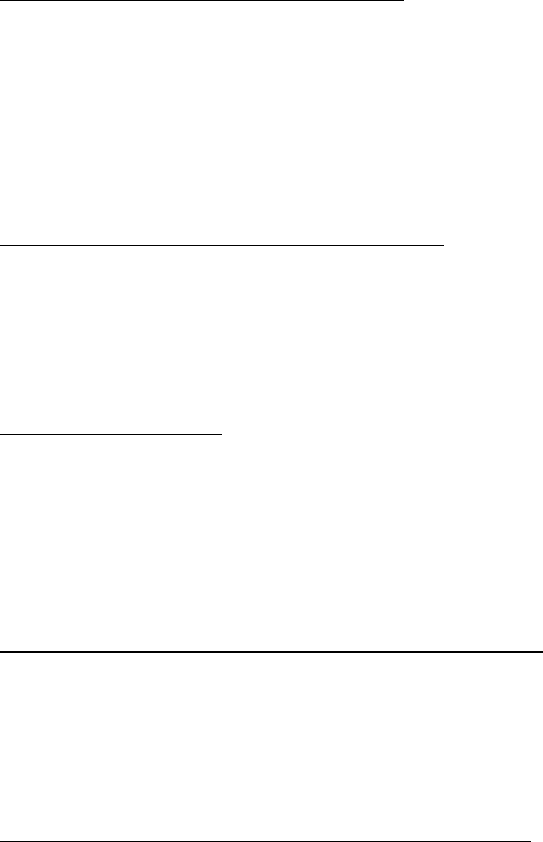
COMDTINST 5216.4E
designated for the S-signature was Name /s/. That format is obsolete. The Coast Guard
writer should use the new format.
C. Delegation of Signature Authority and Format.
1. Delegation of Signature Authority Format. If authorized, certain signature authorities
within the Coast Guard may be delegated. However, final agency action or decision-
making authority should remain with a commanding officer of the U.S. Coast Guard.
Consult with the Office of General Law (CG-LGL) and the Office of Regulations and
Administrative Law (CG-LRA) regarding subsequent delegations of authorities. All
delegations of signature authority must be made in writing, to position and title rather
than in name alone, and include a description of the types of documents authorized. The
commanding officer must sign the delegation memorandum.
2. Limitations to Signature Authority Delegation. A commanding officer may not delegate
signature authority for documents that establish policy, make changes to the activities,
missions, or efficiency, and are addressed to higher authority, deal with matters under the
Uniform Code of Military Justice (UCMJ), or are required by law or regulation (e.g.,
ship’s logs). Note, as a point of clarification this does not limit the functional duties
otherwise required, such as an executive officer or operations officer as appropriate.
3. Subsequent Delegation. Unless otherwise restricted by law or policy, authorized
subordinates may delegate signature authority to the lowest responsible position related
to the function involved. However, scope of this authority must be articulated by the
commanding officer. Final agency action or decision-making authority should remain
with a commanding officer of the U.S. Coast Guard. Consult with the Office of General
Law (CG-LGL) and the Office of Regulations and Administrative Law (CG-LRA)
regarding subsequent delegations of authorities.
4. Signature Authority by Subordinates within a Command. Subordinates may sign
correspondence that falls within their area of responsibility unless a signature of a higher
official is required. If in doubt, obtain authorization before signing. When subordinates
sign an official letter, such as a business letter, under this delegated authority, they shall
sign “By direction.” Only a few select senior staff members are authorized to sign over
their commanding officer’s title.
5. Delegation Signature Memorandum and Letter “Acting.” Utilize “Acting” when the
signer has been formally appointed to temporarily replace either the commanding officer
or a subordinate who signs a letter by title. For both the memorandum and the letter, the
signature block contains the information of the person signing, and the “Acting” title is
inserted. Please note that either a wet or electronic signature may be used, but not at the
same time.
Sample - Signature memorandum for an individual signing in an “Acting” capacity.
Electronic Signature Block (and/or)
22

COMDTINST 5216.4E
Wet Signature of person signing
FIRST (or first initial) M. LAST (UPPER or Upper L. Case), (rank/grade)
Acting Title or STAFF SYMBOL (UPPER or Upper L. Case for Title)
Sample - Signature letter for an individual signing in an “Acting” capacity.
Sincerely,
[Wet or Electronic Signature]
First M. Last
FIRST (or first initial) M. LAST
Military grade or SES
Acting, Job title
U.S. Coast Guard
6. Delegation Signature Memorandum “for” and Letter “By direction.” When a delay might
result in a missed urgent deadline, sign a memorandum “for” an absent official. Sign a
letter “By direction” when designated formally to do so. Add the word “for” before the
typed name of the intended signing official. Note this may be penned in dark ink if wet
signed rather than electronically signed. The absent officials’ name remains in the
signature block, the person signing signs their own signature. Please note that either a
wet or electronic signature may be used, but not at the same time.
Sample – Signature letter for an individual signing in a “for” capacity.
for: Electronic Signature of person signing
Wet Signature of person signing
for FIRST (or first initial) M. LAST (UPPER or Upper L. Case), (rank/grade)
STAFF SYMBOL such as COMDT (CG-6)
Sample signature letter “By direction” as designated. Where an electronic signature may
be used, it may be more personable and sometimes more appropriate for a wet signature
on an external letter. Judgment of the Coast Guard writer should be used.
Sincerely,
[Wet or Electronic Signature]
First M. Last
FIRST (or first initial) M. LAST
Military grade or SES
Job title
U.S. Coast Guard
By direction
23

COMDTINST 5216.4E
CHAPTER 6 RECORDS MANAGEMENT, PRIVACY, AND CYBERSECURITY
A. Records Management Guidance.
1. Records Management. Records Management is a program outlining policy and
procedures applied to all government information, allowing end users the ability to
identify, save, and remove or retire information according to federal statute. All
correspondence is required by the Federal Records Act of 1950 (as amended), Reference
(d), to be identified as records. The correspondence writer can review the Records &
Information Management Roles and Responsibilities, COMDTINST 5212.12 (series) for
more information on Coast Guard recordkeeping requirements.
2. Record Keeping. Coast Guard writers must ensure that all products carry the appropriate
records management identification code(s). Federal record keeping requirements are
derived from these identification code(s), known as SSIC. See Chapter 1.
Correspondence Management, Section C, paragraph 12 of this Instruction. Contact a
Records Management Specialist within CG-611 Records Management Division at HQS-
SMB-CG[email protected] for further clarification.
B. Privacy.
1. Privacy. The Coast Guard writer should be cautious not to erode privacy protections and
must protect personally identifiable information (PII) at all times. For example, if
correspondence containing PII is approved to be sent to a personal email (such as for
Coast Guard Auxiliary), or emailed outside of the .mil domain, the correspondence must
be protected through either password or encryption and digital signature. Note that
digital signatures must also be used when sending Health Insurance Portability and
Accountability Act (HIPAA), unit Critical Information List (CIL), and/or protected
Privacy-related information not releasable to the public. Additional guidance may be
found in the mandated Privacy at DHS: Protecting Personal Information training, and in
U.S. Coast Guard Cybersecurity Manual, COMDTINST M5500.13 FOUO (series) and
The Coast Guard Freedom of Information and Privacy Acts Manual, COMDTINST
M5260.3 (series).
C. Cybersecurity.
1. Security Considerations. The Coast Guard writer must verify who they are sending
correspondence to both inside and outside the organization. Digital signatures assist the
Coast Guard writer in ensuring the originator is the actual author, is the originating
source, and that the email or attachments were not altered in transit. Email addresses
should be verified. Group distributions should be used sparingly, and members validated
regularly for currency and need-to-know. Notify the group owner if a distribution is no
longer necessary. Emails sent to incorrect addresses may result in unintended
consequences and reflect poorly upon the Coast Guard. Additional guidance may be
found in U.S. Coast Guard Cybersecurity Manual, COMDTINST M5500.13 FOUO
(series).
24
Appendix A. to COMDTINST 5216.4E
Appendix A. Resources for the Coast Guard Correspondence Writer
DHS Virtual Library
DHS Librarians have worked to develop new connections, facilitating a culture of sharing. The
library services team will continue to serve as a hub, connecting people with knowledge.
DHS Connect dhsconnect.dhs.gov/
Go to the employees tab, to the library drop down menu, search your books or journals.
U.S. Department of State, Protocol Reference 2024
Available at: state.gov/protocol-reference/
Protocol: 25
th
Anniversary Edition: The Complete Handbook of Diplomatic Official and Social
Usage, 2002. United States. Book by M.J. McCaffree, P. Innis and R. Sand (in DHS library).
Style Manual: An Official Guide to the Form and Style of Federal Government Publishing / U.S.
Government Publishing Office 2016. 31
st
edition.
Available at: govinfo.gov/gpo-style-manual
The Tongue and Quill. 2015, Rev. 2022. AF Handbook 33-337.
Available at e-publishing.af.mil/ .
Dictionaries
Dictionary by Merriam-Webster.com. 2020 Merriam-Webster, Incorporated.
Available at merriam-webster.com/ .
American Dictionary. Webster’s Third New International Dictionary, Unabridged. Merriam-
Webster. (1961, revised). Available at DHS Virtual Library and Coast Guard Headquarters Law
Library.
British Dictionary and the United Nations Standard. Concise Oxford English Dictionary. 2011
12
th
edition. Available at DHS Virtual Library and Coast Guard Headquarters Law Library.
Plain Language and Grammar Websites
Plainlanguage.gov, 2024. Official website of the United States Government and is augmented by
non-profit organizations and professional groups to support plain language writing. Several open
source dictionaries, thesaurus, and grammar sites are available at plainlanguage.gov/ .
The United States Congress, Washington D.C.
Library of Congress, 2020. This is an official website of the United States Government. There
are many historical sources, including historical correspondence available at loc.gov/collections .
Coast Guard writers may gain local access with a user registration.
A-1
Appendix B. to COMDTINST 5216.4E
Appendix B. Coast Guard Models of Address
Addressee as listed under the “Title” header below. The address for a letter/envelope includes
full rank/rate, full name and service abbreviation, followed by the mailing address. Salutation
includes Dear Full Title (Last Name), and complimentary close of sincerely. Use of other
official titles such as Officer Candidate and Cadet Ranks are also permissible.
Coast Guard Military Service Rates and Ranks
Paygrade Title Abbreviation
Enlisted Rates of the Coast Guard
E-1 Seaman Recruit (SR)
E-2 Seaman Apprentice or Fireman Apprenti
ce (S
A) (FA)
E-3 Seaman or Firem
an (SN)
(FN)
E-4 Petty Officer Third Clas
s (
PO3)
E-5 Petty Officer Second Cl
ass (
PO2)
E-6 Petty Officer First Class (PO1)
E-7 Chief Petty Offi
cer (CP
O)
E-8 Senior Chief Petty Office
r (S
CPO)
E-9 Master Chief Petty Offi
cer (M
CPO)
Most Senior Enlisted Position Titles
E-9 Command Master Chief Petty Officer (CMC)
E-9 Coast Guard Reserve Forces Master Chi
ef (CG
RF-MC)
E-9 Master Chief Petty Officer of the Coast Guar
d (M
CPOCG)
E-9 Master Chief Petty Officer of the Coast Guard Reserv
e (M
CPO-CGR)
Warrant Officer Ranks
W-1 Chief Warrant Officer (rank not currently in use) (CWO)
W-2 Chief Warrant Office
r 2 (CW
O2)
W-3 Chief Warrant Office
r 3 (CW
O3)
W-4 Chief Warrant Office
r 4 (CW
O4)
Officer Ranks
O-1 Ensign (ENS)
O-2 Lieutenant Junior Gra
de (
LTJG)
O-3 Lieutenan
t (
LT)
O-4 Lieutenant Commande
r (L
CDR)
O-5 Commande
r (CD
R)
O-6 Captain (CAPT)
O-7 Rear Admiral (Lower Half
) (RD
ML)
O-8 Rear Admiral (Upper Half
) (
RADM)
O-9 Vice Admir
al (
VADM)
O-10 Admir
al (
ADM)
B-1

Appendix C. to COMDTINST 5216.4E
Appendix C. Sample Memoranda and Letters (Including Easy Edit Formats)
(Retrieve the latest editable version internally through the Pixel Dashboard “Links.” Navigate to
Directives Library titled “CG Pubs Search.” Select the “Other Publications” dropdown and type
template. Download the Easy Edit versions for use.)
Sample Memoranda
Blank Memorandum
How to Prepare a Memorandum
Blank Memorandum for the Record
How to Prepare Endorsements (Same/New Page)
Standard Operating Procedure (SOP) Memorandum
Sample Letters
Blank Business Letter
How to Prepare a Business Letter
Blank Flag Letter
C-1

Appendix C. to COMDTINST 5216.4E
Commandant
Unit Street Address
United States Coast Guard Mail Stop XXXX
[May be customized to reflect local City, State Zip Code
unit] Staff Symbol: CG-XXXX
Phone: (xxx) xxx-xxxx
Email: officialemail@uscg.mil
SSIC
dd Mmm yyyy
MEMORANDUM
[Wet or Electronic Signature Here]
From: First Name MI. Last Name Reply to Staff Symbol
Staff Symbol Attn of: Name of Point of Contact
Phone: (xxx) xxx-xxxx
To: Name or Staff Symbol
Thru: [Enter Name or Staff Symbol]
Subj: [ENTER SUBJECT]
Ref: (a) [Optional Reference]
1. Start typing. Yes, numbering the paragraphs is required unless there is only one paragraph.
2. Ensure two lines separate the MEMORANDUM (Times New Roman, size 16 font) and
“From” line.
3. Ensure two lines separate the last sentence of the paragraph and the “#” placed on the third
line.
4. Ensure two lines separate the “#” and “Enclosure.”
#
Enclosure: (1) [Optional Enclosure]
Dist: [Optional Distribution]
Copy: [Optional Copy]
Blind Copy: [Optional Blind Copy – Internal to Coast Guard only]
C-2

Appendix C. to COMDTINST 5216.4E
Commandant
Unit Street Address
United States Coast Guard Mail Stop XXXX
City, State Zip Code
Staff Symbol: CG-XXXX
Phone: (xxx) xxx-xxxx
Email: officialemail@uscg.mil
SSIC/Optional Serial #
dd Mmm yyyy
MEMORANDUM
(Wet or Electronic Signature here)
From: First Name MI. Last Name Reply to Staff Symbol
Staff Symbol Attn of: Name of Point of Contact
Phone: (xxx) xxx-xxxx
To: First Name MI. Last Name or
Staff Symbol
Thru: First Name MI. Last Name or
Staff Symbol
Subj: HOW TO PREPARE/WRITE A MEMORANDUM
Ref: (a) Correspondence Manual, COMDTINST 5216.6 (series)
1. The memorandum is for official correspondence internal to the Coast Guard and other federal
agencies unless a different format is called for. Use names, titles, or staff symbols in the “From,
To, and Thru” lines. The “Reply to Attn of” may be used for the primary contact if not the
sender. Delete if not in use. “Thru” addressees may approve by placing their initials or signature
and date (optional) beside or slightly above the “Thru” line.
2. The Coast Guard writer must sign their name above the “From” line. For digital signature,
place the signature box above the characters in last name. If signing “for” another individual,
this needs to be indicated by writing “for” to the left of your signature box.
3. The date is directly below the SSIC. If the memorandum is two or more pages, the “Subj”
line would appear on the same line as the SSIC (see next page of this memorandum for format).
If a serial number is used, place it only on the first page in the preferred format.
4. Your content should be written in paragraph wrapped text form and each paragraph
numbered. After your content, including decision block is written, place “#” two lines below (on
the third line) the last paragraph to indicate the end of the memorandum. The “Copy:” block, if
applicable, appears on all copies. The “Blind Copy” block only appears on the file copies
remaining within the unit.
a. Subparagraphs numbering must align the first letter with the start of the first sentence
from the preceding paragraph. This is illustrated here.
b. Subsequent subparagraphs are sequentially numbered and aligned accordingly.
C-3
Appendix C. to COMDTINST 5216.4E
Subj: HOW TO PREPARE/WRITE A MEMORANDUM SSIC
dd Mmm yyyy
(1) A subparagraph to a subparagraph must be numbered differently from the main
subparagraph as in this example. The hanging indent must also align with the first
letter of the subparagraph as indicated here.
(2) The Coast Guard writer may occasionally vary the numbering scheme (i.e., the
originator is asking for a different template style, a local memo containing long lists).
(a) The key to the numbering scheme is consistency throughout the memorandum.
(b) Bulletized points are at times acceptable. However, bullets are not numbered.
Rather, a preferred simple bullet symbol should be used. Avoid stylized bullets.
• This symbol for bullets may be used.
• Short lists support single-space bullets and do not need a semicolon.
o The key is consistency throughout.
o You must have two bullets for a list.
5. For multiple addresses, a “Distribution” line may be substituted for the “To” line. Change the
“To” line to read “Distribution.” Next, at the bottom of the memo on the second line directly
below “Enclosure,” place “Dist.” When enclosures are not used, place “Dist” on the second line
below “#.”
#
Enclosure: (1) Listed in order of appearance in the memo
(2) Artifact is not listed in the reference section
(3) Label enclosures to correspond with numbering when practical
Dist: Used for multiple addresses only
Replace “To” line with “Distribution”
List all addressees
Copy: Optional and appears on all copies if used
Short Title of Information Addressee
Short Title of Second Information Addressee
Distribution List (for multi-page copy distribution)
Blind Copy: Used only if applicable
Appears only on the file copies remaining within the unit
[insert page number in footer, centered, for pages 2 or more starting on the second page]
2
C-4

Appendix C. to COMDTINST 5216.4E
Commandant
Unit Street Address
United States Coast Guard Mail Stop XXXX
[Maybe customized to reflect local City, State Zip Code
unit] Staff Symbol: CG-XXXX
Phone: (xxx) xxx-xxxxx
Email: officialemail@uscg.mil
SSIC
dd Mmm yyyy
MEMORANDUM
(Wet or Electronic Signature here)
From: First Name MI. Last Name Reply to Staff Symbol
Staff Symbol Attn of: Name of Point of Contact
Phone: (xxx) xxx-xxxx
To: First Name MI. Last Name or
Staff Symbol
Thru: First Name MI. Last Name or
Staff Symbol
Subj: MEMORANDUM FOR THE RECORD
Ref: (a) [Optional Reference]
1. Start typing here. The subject must reflect MEMORANDUM FOR THE RECORD. The
subject line may be customized further to include the more specific topic such as memorandum
for the record on “X” decision. Ensure two lines separate the last sentence of the paragraph and
the “#.”
#
Enclosure: (1) [Optional Enclosure]
Dist: [Optional Distribution]
Copy: [Optional Copy]
Blind Copy: [Optional Blind Copy]
C-5

Appendix C. to COMDTINST 5216.4E
Commandant
Unit Street Address
United States Coast Guard Mail Stop XXXX
[Maybe customized to reflect local City, State Zip Code
unit] Staff Symbol: CG-XXXX
Phone: (xxx) xxx-xxxx
Email: officialemail@uscg.mil
SSIC
dd Mmm yyyy
MEMORANDUM
(Wet or Electronic Signature here)
From: First Name MI. Last Name or Command Reply to Staff Symbol
Staff Symbol or Unit Attn of: Name of Point of Contact
Phone: (xxx) xxx-xxxx
To: First Name MI. Last Name or Command
Staff Symbol or Unit
Thru: (1) An individual or command (use judgement)
(2) (Additional as needed)
Subj: HOW TO PREPARE ENDORSEMENTS
Ref: (a) [Optional Reference]
1. A same page endorsement is the preferred method. Many endorsements forward without
comment through the addressee because comments are optional. Sometimes a written
endorsement is required. Contact the originator for further guidance if needed.
2. For the “Thru” line, renumber addressees in parentheses as described above. Ensure two
blanks lines are used to separate between this last sentence and the “#”.
#
(start on third line SSIC is not repeated) dd Mmm yyyy
FIRST ENDORSEMENT
(Wet or Electronic Signature here)
From: First Initial MI. Last Name
Staff Symbol
To: First Name MI. Last Name or Staff Symbol
Thru: First Name MI. Last Name or Staff Symbol
1. This section begins the first endorsement statement. Keep on the same page if the
endorsement will fit on one page and the endorsement is likely to be signed without revisions
#
C-6
Appendix C. to COMDTINST 5216.4E
Subj: HOW TO PREPARE ENDORSEMENT SSIC
dd Mmm yyyy
SECOND ENDORSEMENT
(Wet or Electronic Signature here)
From: First Initial MI. Last Name or Command
Staff Symbol or Command
To: First Name MI. Last Name or Command
Staff Symbol or Unit
Ref: (a) [Optional reference typically unnecessary on an endorsement]
1. This section begins the new page endorsement statement. Start a new page if the answer all
questions below is no:
a. Is the latest communication less than a page?
b. Will all of the second endorsement fit on that page?
c. Is the endorsement sure to be signed without a revision?
2. Use standard 8 ½ x 11 paper for all pages of new page endorsement. Include “Subj” on each
page. Every page must be numbered starting with the second page, centered, as indicated in the
footer below.
4. Use staff symbols only when appropriate. The endorser must sign and date the “Thru” line if
the endorsement package is forwarded without comment, approval is implied.
#
Copy: [When substantive content is added, include prior endorsers.]
2
C-7

Appendix C. to COMDTINST 5216.4E
Commandant
Unit Street Address
United States Coast Guard Mail Stop XXXX
[Maybe customized to reflect local City, State Zip Code
unit] Staff Symbol: CG-XXXX
Phone: (xxx) xxx-xxxx
Email: officialemail@uscg.mil
SSIC
dd Mmm yyyy
MEMORANDUM
(Wet or S-signature here)
From: First Name MI. Last Name, Rank/Rate (as applicable) Expiration [NTE 10 yrs]
Title and/or Staff Symbol dd Mmm yyyy
To: Unit/Specific internal audience
Staff Symbol (as applicable)
Subj: STANDARD OPERATING PROCEDURE (SOP) FOR [NAME THE TOPIC, THIS
MAY EXTEND TO TWO LINES]
Ref: (a) [Optional Reference]
1. SOP Format Guidance. The subject must reflect STANDARD OPERATING PROCEDURE.
A cover may be placed on the SOP at unit discretion. The second page should state: This Page
Intentionally Left Blank (all caps). Ensure two lines separate the last sentence of the paragraph
and the “#.” The standard fields of Enclosure, Distribution, or Copy may be used if needed.
2. SOP Content. The content of the SOP may be customized and expiration date not exceeding
10 years of issuance must be placed within the SOP with a mandatory review to be conducted at
5 years using form CG-5215A, Directives, Publications, and Forms Validation. The reviews
must be administratively retained locally for audit purposes. Cancelled SOPs must be retained
for audit purposes. Follow record retention schedule as appropriate.
3. Other Notes. An SOP must not look like a Commandant Instruction in format. The purpose
of an SOP is to provide procedural guidance which is ultimately based on organizational policy.
For example, there may be an annual policy requirement to fulfill. However, the policy does not
address unique command procedures, and this SOP format is appropriate to clarify these
procedures. The SOP must be promulgated to those in the To line. Newly reporting personnel
may need to review applicable SOPs. Therefore, it is important to keep these SOPs current and
cancel using CG-5215A when obsolete.
#
C-8

Appendix C. to COMDTINST 5216.4E
Commandant
Unit Street Address
United States Coast Guard Mail Stop XXXX
[May be customized to reflect local City, State Zip Code
unit] Staff Symbol: CG-XXXX
Phone: (xxx) xxx-xxxx
Email: officialemail@uscg.mil
SSIC
[Optional Serial #]
Full month dd, yyyy
[Enter Recipient Address, this is a blank Business Letter template]
Dear Sir or Madam:
Start typing here. No indents.
Second paragraph. No indents.
Third paragraph. No indents. Two lines separating between last sentence of the paragraph and
closing, centered. Closing is ¼ inch right of center.
Sincerely,
[FI. MI. LAST NAME]
[Enter Title]
U.S. Coast Guard
Enclosure: (1)[Optional Enclosure]
Copy: [Optional Copy]
C-9

Appendix C. to COMDTINST 5216.4E
Commandant
Unit Street Address
United States Coast Guard Mail Stop XXXX
[May be customized to reflect local City, State Zip Code
unit] Staff Symbol: CG-XXXX
Phone: (xxx) xxx-xxxx
Email: officialemail@uscg.mil
SSIC
[Optional Serial #]
Full month dd, yyyy
[Enter Recipient Address for Business Letter]
Dear Sir or Madam:
Start typing here. No indents.
Second paragraph. No indents.
Third paragraph. No indents. Two lines separating between the last sentence of the paragraph
and closing, centered. Closing is ¼ inch right of center.
Sincerely,
[FI. MI. LAST NAME]
[Enter Title]
U.S. Coast Guard
Enclosure: (1) [Optional Enclosure]
Copy: [Optional Copy]
C-10
Appendix C. to COMDTINST 5216.4E
[Symbol/Flag Design] [Custom Letterhead for FLAG/SES/MCPOCG and Others
Authorized Stationery]
[1 line]
[Centered Date Stamp-Optional Placement]
[Full Month dd, yyyy]
Dear Sir or Madam: [Start 2 inches from top on custom stationery, 3 on standard] [1 line]
[Start typing here. Indent each paragraph throughout the letter. Typically a minimum of 2
paragraphs. ]
[2 lines, more if necessary for visual appeal]
Sincerely,
[ENTER SIGNATURE ALL CAPS]
[Enter Title lowercase]
[2 lines]
Enclosure: (1) [Optional Enclosure]
[1 line between Enclosure and Address, or 2 lines between title and Optional Address if selected]
[Optional To Address]
[Custom stationery is typically 7 inch width x 8.5 inch length, margins should be set 2 inches all
around when using full size 8 ½ x 11 inch paper and templates]
[Address typically part of customized stationary at top]
C-11
Appendix D. to COMDTINST 5216.4E
Appendix D. List of Correspondence Forms
(Retrieve the latest editable version internally through the Pixel Dashboard “Links.” Navigate to
Directives Library titled CG Pubs Search. Select the Forms dropdown and type the form
number.)
Digest Form CG-4229
Concurrent Clearance Form CG-4590
Directives, Publications, and Forms Validation Form CG-5215A
Routing Slip Form CGHQ-6046
D-1
Appendix E. to COMDTINST 5216.4E
Appendix E. Command Long Titles and Abbreviations
Retrieve the latest version internally through the Pixel Dashboard “Links.” Navigate to
Directives Library titled CG Pubs Search. Select the “Other Publications” dropdown and type in
the search box “Command Long Titles”.
E-1
